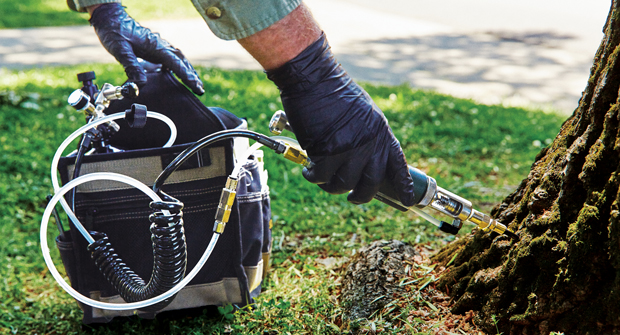
The Herring Group recently completed its 10th Annual Landscape Industry Benchmark Report. So, what story does this year’s report tell? You will find some interesting statistics below, but the big idea is that most companies can be a lot more profitable than they are.
Before we get into just how much more profitable landscape companies could be, here’s some background on our Benchmark Report, sponsored by Aspire, Ewing Outdoor Supply, Unlimited Labor and Weathermatic.
This year, 144 companies with revenue between $1 million and $140 million participated. Total revenue for participants was $1.9 billion over a 12-month period that ended on Sept. 30, 2023 — almost as much as BrightView’s revenue.
To produce the report, we obtained income statements from all participants and formatted them to make them comparable. Participants received an Excel file with every participant’s summarized income statement — anonymized to maintain confidentiality. Then, each company created its own groups of peers based on revenue mix and size. Using that group of peers, management can see where they are winning and where they can improve.
Key results
At The Herring Group, we use operating profit margin to measure profitability. Operating profit equals revenue less direct job expenses, indirect job expenses and overhead expenses, including straight-line depreciation expense. Operating profit margin is operating profit divided by revenue. This indicator measures customer satisfaction, effectiveness of management and efficiency of operations. We encourage companies to plan for an operating profit margin of 12 percent and settle for anything above 10 percent as an initial goal.
Our 2023 report shows a weighted average operating profit margin of 6.4 percent, up from five percent last year. Companies with an operating profit margin above 10 percent averaged 13.3 percent, up from 12.8 percent last year. Companies with an operating profit margin below 10 percent averaged 3.5 percent, up from 2.9 percent last year. That’s a big gap. Nearly one out of every three companies had an operating profit margin greater than 10 percent.
Which group are you in?
If you are in the high-profit margin group, congratulations! You are setting a great example for the industry. Hopefully, your example helps eliminate some of the foolish pricing that exists in the industry.
If you are in the low-profit margin group, do you want that situation to change?
Getting to a higher profit margin usually requires:
- Making a commitment and rejecting excuses.
- Understanding your costs.
- Pricing to hit your profit margin goal.
- Understanding which divisions and services produce the highest operating profit margins and adjusting that mix of services.
- Managing actual labor hours to match estimates.
- Understanding which contracts are most profitable and least profitable.
- Being disciplined in determining renewal pricing.
It’s not all about the money. In our work with clients, we find that a higher operating profit margin is correlated to a greater life margin for the owner. Life margin is the excess time and energy that no longer must be invested in the company.
When analyzing the participants exceeding 10 percent, I noticed the following:
- Companies of every size and in every region hit the goal.
- Companies with and without snow hit the goal.
- Companies that grew fast and those that grew slow hit the goal.
Here are a couple of other interesting statistics:
- High-profit companies’ average total payroll expense (direct and overhead) as a percentage of revenue is five percentage points lower than the average for low-profit companies.
- High-profit companies’ average gross margin is 4.4 percentage points higher than the average for low-profit companies.
- All other expense lines that we measured were roughly comparable.
As you contemplate the start of a new season, now is the time to develop your plan and seek commitment from your team to reach the goal in 2024.
To be notified when registration opens for next year’s Herring Group Landscape Industry Benchmark Report, visit here.


